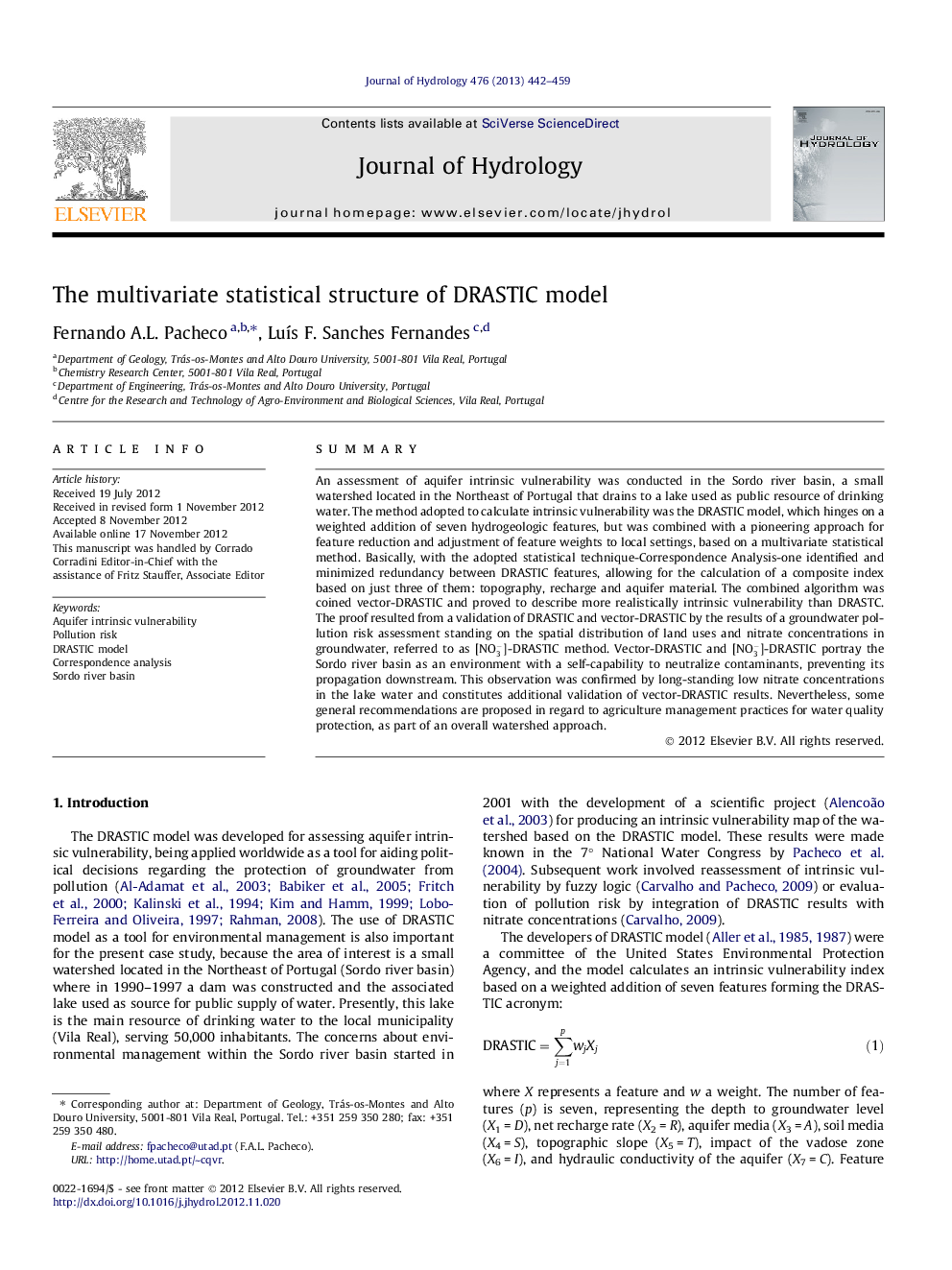| کد مقاله | کد نشریه | سال انتشار | مقاله انگلیسی | نسخه تمام متن |
|---|---|---|---|---|
| 4576633 | 1629972 | 2013 | 18 صفحه PDF | دانلود رایگان |

SummaryAn assessment of aquifer intrinsic vulnerability was conducted in the Sordo river basin, a small watershed located in the Northeast of Portugal that drains to a lake used as public resource of drinking water. The method adopted to calculate intrinsic vulnerability was the DRASTIC model, which hinges on a weighted addition of seven hydrogeologic features, but was combined with a pioneering approach for feature reduction and adjustment of feature weights to local settings, based on a multivariate statistical method. Basically, with the adopted statistical technique-Correspondence Analysis-one identified and minimized redundancy between DRASTIC features, allowing for the calculation of a composite index based on just three of them: topography, recharge and aquifer material. The combined algorithm was coined vector-DRASTIC and proved to describe more realistically intrinsic vulnerability than DRASTC. The proof resulted from a validation of DRASTIC and vector-DRASTIC by the results of a groundwater pollution risk assessment standing on the spatial distribution of land uses and nitrate concentrations in groundwater, referred to as [NO3-]-DRASTIC method. Vector-DRASTIC and [NO3-]-DRASTIC portray the Sordo river basin as an environment with a self-capability to neutralize contaminants, preventing its propagation downstream. This observation was confirmed by long-standing low nitrate concentrations in the lake water and constitutes additional validation of vector-DRASTIC results. Nevertheless, some general recommendations are proposed in regard to agriculture management practices for water quality protection, as part of an overall watershed approach.
► Neutralize redundancy between DRASTIC features using multivariate statistics.
► Automatically adjust DRASTIC feature weights to local settings.
► Validate a pioneering method of vulnerability mapping with pollution risk assessment.
Journal: Journal of Hydrology - Volume 476, 7 January 2013, Pages 442–459